More about A Wheatfield, with Cypresses
- All
- Info
- Shop

Sr. Contributor
Vincent van Gogh had a bit of a thing for the imposing forms of cypress trees, but he wasn’t alone in this obsession.
The passionately emotional Dutch artist loved him some nature, so he naturally fixated on the creepiest thing he could find in southern France: the tall and scary cypress tree. Before van Gogh, Cézanne included the spooky trees in some of his paintings, and after van Gogh, Modigliani got in on the trend.
Poor Van Gogh thought that retreating to the countryside would be good for his art. Little did he know that this adventure would be his last. After growing weary of the hustle and bustle of Paris, van Gogh headed for the country – a town called Arles in the south of France, where the sunlight was a revelation to the young, Dutch artist. For someone who had become accustomed to the gloomy atmosphere of Northern Europe and the dingy Paris streets, he began to see colors that seemingly did not exist before. He loved it so much that he wanted to start a proto-hippie artist commune there. Sadly, van Gogh’s dream of a whole colony of like-minded artists never came to fruition. Gauguin was the only other artist who showed up. He lasted a mere two months with the volatile van Gogh before leaving. Their tenuous relationship hinted at the madness to come.
Ever the romantic, it’s no wonder that Van Gogh felt drawn to these trees, which appear in a number of his paintings including The Starry Night. To the locals of Provence, cypress trees are known as the tree of death, which is some great foreshadowing considering van Gogh’s untimely death shortly after his encounters with them. This particular view of the tree – a great mass of black rising above an otherwise bucolic landscape – was particularly significant for van Gogh. It’s the subject of not only ten drawings, but also three paintings that are nearly identical. The Metropolitan Museum of Art owns one version. Whereas van Gogh created the Met’s painting directly from nature, the National Gallery’s painting is a copy that the artist made in the makeshift studio he created during his year-long stay at the St-Remy mental asylum. He worked the same subject multiple times to help him transcend physical appearances and delve into the emotional, inner realm that lay beyond the surface. Van Gogh thought that these were some of his best paintings conveying the sweltering, summer heat.
Van Gogh’s long-standing obsession with combining the tree of death and wheat fields is strangely foreboding. Legend has it that, not only a year later in 1890, the suffering artist shot himself in a wheat field, the complications afterward resulting in his death. However, Loving Vincent, the latest film concerning van Gogh’s last years in Arles, would have us believe otherwise. It’s a compelling whodunit that challenges the “mad artist” complex and gives us all a little more hope.
Sources
- Davies, Penelope J.E., Frima Fox Hofrichter, Joseph Jacobs, Ann M. Roberts, and David L. Simon. Janson’s Basic History of Western Art. 8th edition Upper Saddle River, NJ: Pearson Education Inc., 2009.
- Department of European Paintings. “Vincent van Gogh (1853-1890).” The Heilbrunn Timeline of Art History. The Metropolitan Museum of Art. March 2010. https://www.metmuseum.org/toah/hd/gogh/hd_gogh.htm. Accessed February 26, 2018.
- Gompertz, Will. What Are You Looking At? New York: Plume, 2012.
- Leighton, John, Anthony Reeve, Ashok Roy, and Raymond White. “A Cornfield, with Cypresses.” National Gallery Technical Bulletin. Volume 11. The National Gallery. https://www.nationalgallery.org.uk/upload/pdf/leighton_reeve_roy_white1…. Accessed Febr
- The Metropolitan Museum of Art. “Wheatfield with Cypresses.” Collection Online. https://www.metmuseum.org/art/collection/search/436535. Accessed February 26, 2018.
- The National Gallery. “A Wheatfield, with Cypresses.” Paintings. https://www.nationalgallery.org.uk/paintings/vincent-van-gogh-a-wheatfi…. Accessed February 26, 2018.
- The Van Gogh Museum. “Wheatfield and Cypresses.” Collection. https://www.vangoghmuseum.nl/en/collection/d0445V1962. Accessed February 26, 2018.
- WikiArt. “Cypress Trees and House.” Amedeo Modigliani. https://www.wikiart.org/en/amedeo-modigliani/cypress-trees-and-house-19…. Accessed February 26, 2018.

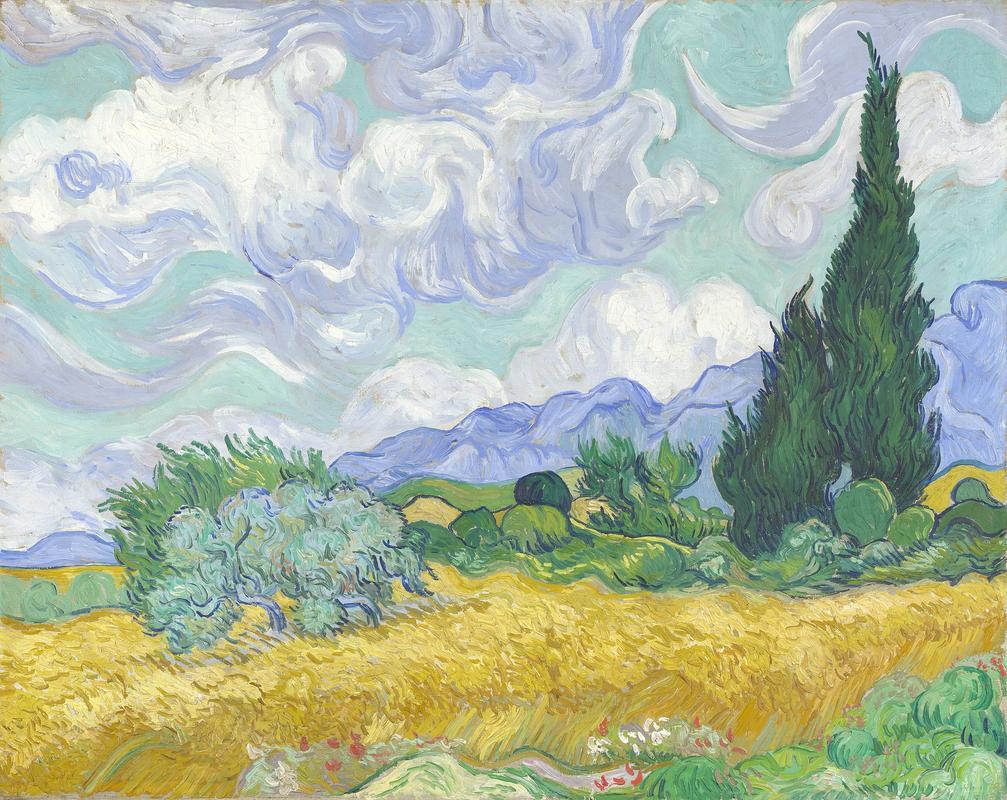


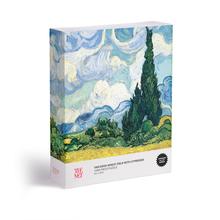
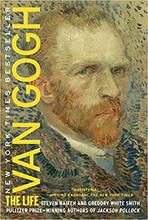
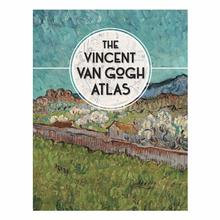










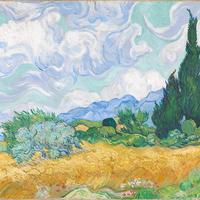
4/5 stars